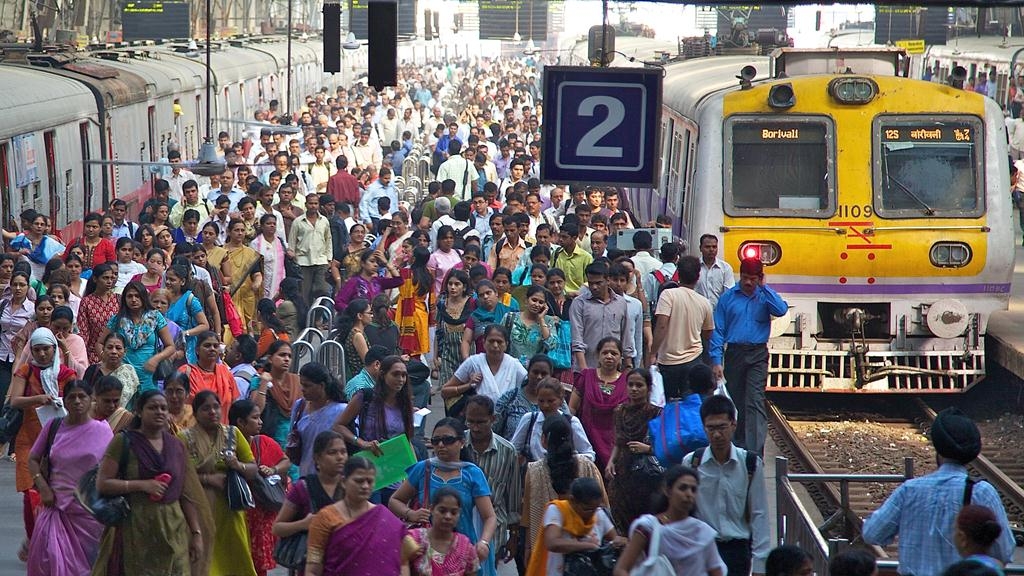Children now study and sleep better, and many are doing well at school
After decades of living in constant fear of eviction, the resettled slum-dwellers now legally own their own homes for the first time in their lives. What’s more, the brick and mortar apartments are a huge improvement from the makeshift shacks the people lived in before, especially during the fierce monsoon rains.
Running water and indoor plumbing are a new benefit. “One of the best things is that each family now has a toilet and bathroom of their own,” says Jyothi, emphasizing the difference the new apartments have made to the lives of women and girls.
With clean water, jaundice, typhoid, and gastrointestinal infections have reduced. “In the slum, the children used to fall ill frequently and missed school often,” she adds. “Now, they study and sleep better, and many are doing well at school. School buses also come to the neighborhood – unlike in the slum that was always forsaken.”
Importantly, the easy availability of water has brought a new sense of harmony to the community. “Earlier, people were always fighting - over water, over the toilets, over everything. Thankfully, that’s now a thing of the past.”
New livelihood opportunities have led to higher living standards
The project has also fostered a better living environment for the resettled slum-dwellers. Schools, day-care centers, and women’s centers have been established, and livelihood options expanded through skills training for the youth, and micro-credit for women. Many women have opened small shops, set up beauty parlors, or started other businesses.
“In the slum, women never ventured too far from home. But, after moving here, girls and women have started going out to work,” says Madhavi Shinde who has begun to cater hot lunches for office-goers from her new home in the Majaz resettlement colony.
In Mankhurd, Nirmala Ninave has set up a successful beauty parlor. “Now that I have earned a name, I want to take a bank loan to expand my business,” the young woman says.
The better address, together with the trappings of a more middle-class existence, has boosted the residents’ self-esteem. “When we lived in the slum no one respected us. Now, I proudly tell people where I live and they treat us differently,” says Uday Kumar, Jyothi’s auto-rickshaw driver husband. “It’s also easier to get a job. What’s more, families are getting better marriage proposals for their sons and daughters,” a sure sign of upward mobility among the communities.
With new economic opportunities, living standards have improved. “Most people now own a TV and fridge and sleep on beds instead of on the ground. And they work hard to keep up with their neighbors,” Kumar says.
Rekindling old community bonds
To ensure that the new high-rise complexes don’t turn into vertical slums, women’s groups have been established to manage the shared environment. Unschooled Jyothi - once a domestic help – leads one such group, helping people adjust to their new surroundings, encouraging women to save, and counseling wayward children. “People here have only known life in the slums. We have to work hard to make them change their ways,” she says.
To prevent the area from turning into an anonymous den of crime, alienation, and decay, the strong community bonds that existed in the slums are being rekindled. “We keep the community spirit alive by celebrating all festivals, be it Onam, Pongal, Eid, Christmas or Diwali,” explains Jyothi. The string of festivals reflects the melting pot of communities that flock to the great economic hub of Mumbai from all parts of the country to earn a living. It’s no surprise then that government schools in the area teach in 7 different languages.
The women’s groups also keep the peace by taking on drunken husbands, arbitrating in disputes, and tackling community problems. “Although adolescents are generally better behaved here than they were in the slum, I make it a point to keep a check on the neighborhood boys,” explains Jyothi.
An independent study has confirmed that the provision of formal housing to resettled families has raised their social status and improved their employability and creditworthiness. It has also given them, especially the women, a greater sense of security.
“Although this was one of the most complex urban environments in the world, the project’s resettlement process has proved to be a landmark exercise in radically improving the lives of the poor,” concluded Agarwal.

